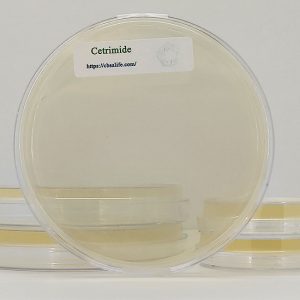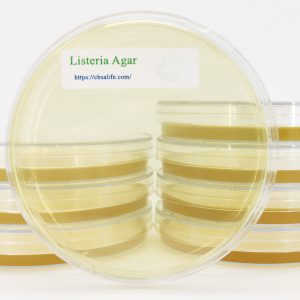CBSAlife Decarboxylase media are used in the biochemical differentiation of gram-negative enteric bacilli based on the production of arginine dihydrolase and lysine and ornithine decarboxylase.
INTENDED USE
CBSAlife Decarboxylase media are used in the biochemical differentiation of gram-negative enteric bacilli based on the production of arginine dihydrolase and lysine and ornithine decarboxylase.
SUMMARY AND EXPLANATION
Moeller introduced the decarboxylase media for detecting the production of lysine and ornithine decarboxylase and arginine dihydrolase. These media are a useful adjunct to other biochemical tests for the speciation and identification of the Enterobacteriaceae and other gram-negative bacilli. The production of ornithine decarboxylase is particularly useful for differentiating Klebsiella and Enterobacter species. Klebsiella species are non-motile and, except for K. ornithinolytica, do not produce ornithine decarboxylase, while most Enterobacter species are motile and, except for E. agglomerans, usually produce this enzyme.
PRINCIPLE
Decarboxylase basal media consist of peptones and beef or yeast extract to supply the nitrogenous and other nutrients necessary to support bacterial growth. Pyridoxal is an enzyme co-factor for the amino acid decarboxylase. Dextrose is a fermentable carbohydrate. Bromcresol purple and cresol red are pH indicators. The amino acids lysine, ornithine or arginine are added to the basal medium at a concentration of 10.0 g/L to detect the production of the enzyme specific for these substrates.
When the medium is inoculated with a bacterium that is able to ferment dextrose, acids are produced that lower the pH of the medium and change the color of the indicator from purple to yellow. The acidic condition also stimulates decarboxylase activity. If the organism produces the appropriate enzyme, the amino acid in the medium is degraded, yielding a corresponding amine. Decarboxylation of lysine yields cadaverine, while decarboxylation of ornithine yields putrescine. Arginine is first hydrolyzed to form ornithine, which is then decarboxylated to form putrescine. The production of these amines elevates the pH of the medium, changing the color of the indicator from yellow to purple or violet. If the organism does not produce the appropriate enzyme, the medium remains acidic (yellow). Consult the reference for more information.
Each isolate to be tested must also be inoculated into a tube of the basal medium that does not contain the amino acid. If this tube becomes alkaline, the test is invalid.
To obtain the appropriate reactions, the inoculated tubes must be protected from air with a layer of sterile mineral oil. Exposure to air may cause alkalinization at the surface of the medium, which could cause a decarboxylase-negative organism to appear positive.
| Amino Acids | Arginine, Lysine, Ornithine |
|---|---|
| Container | 5ml Tube |
| Package | 1, 5, 10, 20 |
| Technical Data | https://cbsalife.com/wp-content/uploads/2022/01/Decarboxylase-Broth.pdf |
Only logged in customers who have purchased this product may leave a review.





Reviews
There are no reviews yet.